Lenovo ThinkPad P52 review – workstation with brand new hardware and old school look
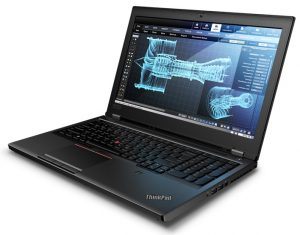 Yet another workstation has come to our office. Lenovo ThinkPad P52 is a real power horse, featuring a Core i7-8850H (vPro) processor, an NVIDIA Quadro P2000 GPU, and a large NVMe SSD. Obviously, in order to justify its $2000 price tag, Lenovo has to bring something extraordinary. Another obstacle it has to go through as a mobile workstation is beating cheaper, similarly performing gaming laptops like ASUS ROG GL504 for instance.
Yet another workstation has come to our office. Lenovo ThinkPad P52 is a real power horse, featuring a Core i7-8850H (vPro) processor, an NVIDIA Quadro P2000 GPU, and a large NVMe SSD. Obviously, in order to justify its $2000 price tag, Lenovo has to bring something extraordinary. Another obstacle it has to go through as a mobile workstation is beating cheaper, similarly performing gaming laptops like ASUS ROG GL504 for instance.
Moreover, there are some better looking mobile workstations. A clear example of that is the Dell XPS 15 9570 – definitely a more modern-looking notebook. Anyhow, let’s let the ThinkPad P52 speak for itself.
You can check the prices and configurations in our Specs System: https://laptopmedia.com/series/lenovo-thinkpad-p52/
Contents
Specs Sheet
Lenovo ThinkPad P52 技术规格表
What’s in the box?
Apart from the device itself, Lenovo has included the mandatory manuals and a 170W power supply.
Design and construction
Lenovo ThinkPad P52 is the good old rigid workstation. It has all of the security and durability features that we remember from the archaic IBM devices. Its body employs aluminum and plastic and it’s built like a tank. No, seriously, if you ever drop this laptop on the ground it is most probably going to make a hole in the floor. Moreover, boasting a 24.5 mm profile and weighing 2.45 kilos, it has pretty impressive measurements for a workstation laptop.
In front of the screen, you can see the beautiful keyboard, which (as in every ThinkPad device) is easily removable. Performance-wise, it has a decent travel and feels very clicky. Also, they’ve found enough space for every key you can imagine. The manufacturer has even sacrificed some space for a full-blown arrow experience. However, here we can see the same unnecessary swap of the control and function keys.
Further down we find the touchpad which is rather responsive. A little bit to the right you can see the fingerprint reader which has a weird placement, compared to most of its competitors. Despite the odd location, the reader is fast and super accurate.
If you are familiar with the ThinkPad series, you know that Lenovo likes to put this red knob in the middle of the keyboard. They also supply these notebooks with a full set of mouse keys. This results in the touchpad being surrounded by mouse keys. We call this – poor use of resources. To conclude with this area, there are the speakers above the keyboard. At first, you think – cool, the speakers are pointing towards me, they will sound better. Nope. The only case they sound good is when you are sitting around 5 cm away from them
On the bottom panel of the device, you can see a lot of vents, as well as the 90Wh battery which, by the way, is removable.
| Width | Length | Height | Weight | |
|---|---|---|---|---|
| Lenovo ThinkPad P52 | 377 mm (14.84″) | 252 mm (9.92″) | 24.5 mm (0.96″) | 2.45 kg (5.4 lbs) |
| HP ZBook 15u G5 | 370 mm (12.20″) | 252 mm (8.39″) | 18 mm (0.55″) (-27%) | 1.77 kg (3.9 lbs) (-28%) |
Ports
When it comes to connectivity, Lenovo ThinkPad P52 has you covered. On the left side, you got the USB Type-A 3.1 port with power delivery, SD card reader and a Smartcard reader. On the other side, you can find combo audio jack, as well as two USB Type-A 3.0 ports and a mini DisplayPort (that’s the one with the funny logo). If you seem to miss something, you should take a look at the back of the device, because Lenovo is not quite done yet. There you can see an RJ45 and HDMI 2.0 connector, two USB Type-C ports with Thunderbolt 3 support and finally – the charging port.
Disassembly, upgrade options, and maintenance
Lenovo has made some good choices with the ThinkPad P52. First – they’ve made the 90Wh battery removable. So, if you plan on using the device mostly on a charger, you can remove the battery in order to save it. On the other hand, if the battery goes bad (it eventually will) you can easily replace it without having to disassemble the device.
This drives us to the second good choice – easy to access internals via a service lid. While the battery can be removed with a simple click, you need to put a little effort into removing the service lid. There is a total of 6 Phillips head screws and that’s it. When you remove it you can see a 2.5-inch drive slot, two M.2 NVMe slots, the RAM DIMMs and the WiFi card. Lenovo keeps the device super incognito by putting black strips on top of everything possible.
Display quality
Lenovo ThinkPad P52 is equipped with a Full HD IPS panel, model number Innolux N156HCE-EN1. Its diagonal is 15.6″ (39.62 cm), and the resolution – 1920 х 1080p. Additionally, the screen ratio is 16:9, the pixel density – 142 ppi, their pitch – 0.18 x 0.18 mm. The screen can be considered Retina when viewed from at least 60 cm (from this distance, the average human eye can’t see the individual pixels).
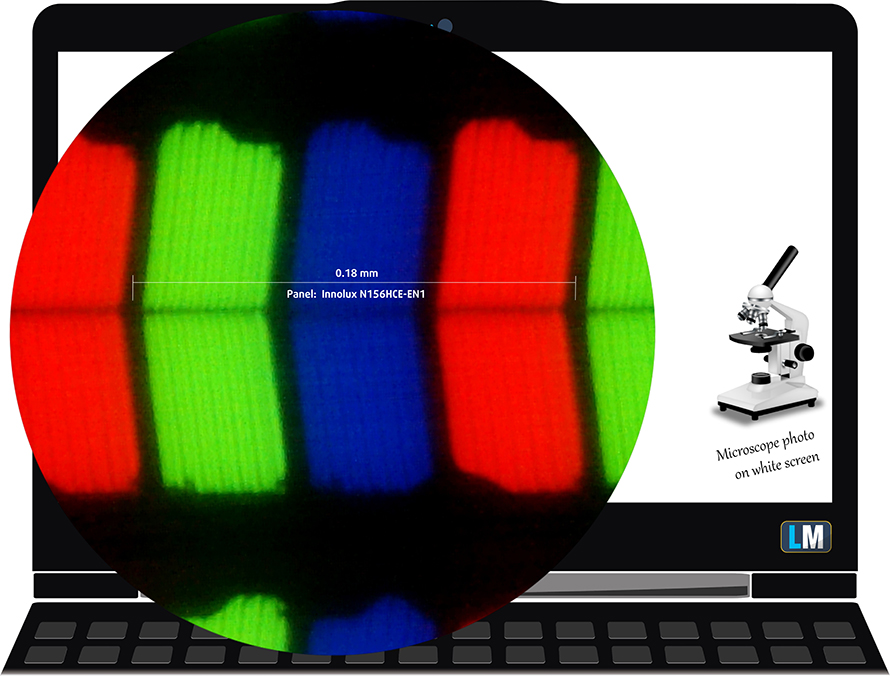
Viewing angles are good. We offer images at different angles to evaluate the quality.

The maximum measured brightness is 301 nits (cd/m2) in the middle of the screen and 286 nits (cd/m2) average across the surface with a maximum deviation of 14%. The Correlated Color Temperature on a white screen and at maximum brightness is 6700K (average) – a little colder than the 6500K optimum for sRGB. The average color temperature through the grey scale before profiling is 6680K.
In the illustration below you can see how the display performs from uniformity perspective. The illustration below shows how matters are for operational brightness levels (approximately 140 nits) – in this particular case at 74% Brightness (White level = 144 cd/m2, Black level = 0.13 cd/m2).
Values of dE2000 over 4.0 should not occur, and this parameter is one of the first you should check if you intend to use the laptop for color sensitive work (a maximum tolerance of 2.0 ). The contrast ratio is very good – 1110:1 (1020:1 after profiling).
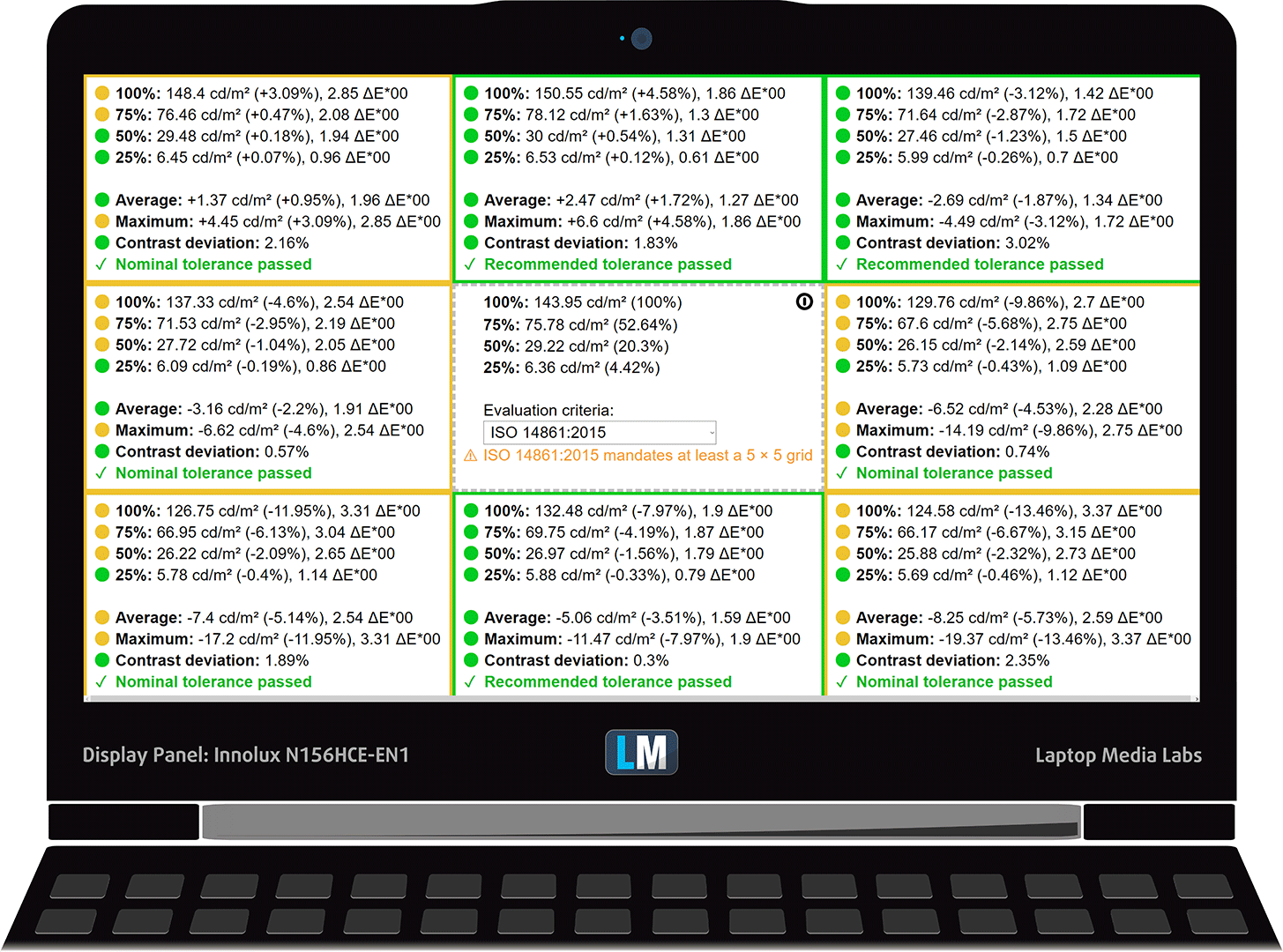
To make sure we are on the same page, we would like to give you a little introduction to the sRGB color gamut and the Adobe RGB. To start, there’s the CIE 1976 Uniform Chromaticity Diagram that represents the visible specter of colors by the human eye, giving you a better perception of the color gamut coverage and the color accuracy.
Inside the black triangle, you will see the standard color gamut (sRGB) that is being used by millions of people in HDTV and on the web. As for the Adobe RGB, this is used in professional cameras, monitors etc for printing. Basically, colors inside the black triangle are used by everyone and this is the essential part of the color quality and color accuracy of a mainstream notebook.
Still, we’ve included other color spaces like the famous DCI-P3 standard used by movie studios, as well as the digital UHD Rec.2020 standard. Rec.2020, however, is still a thing of the future and it’s difficult for today’s displays to cover that well. We’ve also included the so-called Michael Pointer gamut, or Pointer’s gamut, which represents the colors that naturally occur around us every day.
The yellow dotted line shows Lenovo ThinkPad P52’s color gamut coverage.
Its display covers 90% of the sRGB/ITU-R BT.709 (web/HDTV standard) in CIE1976.
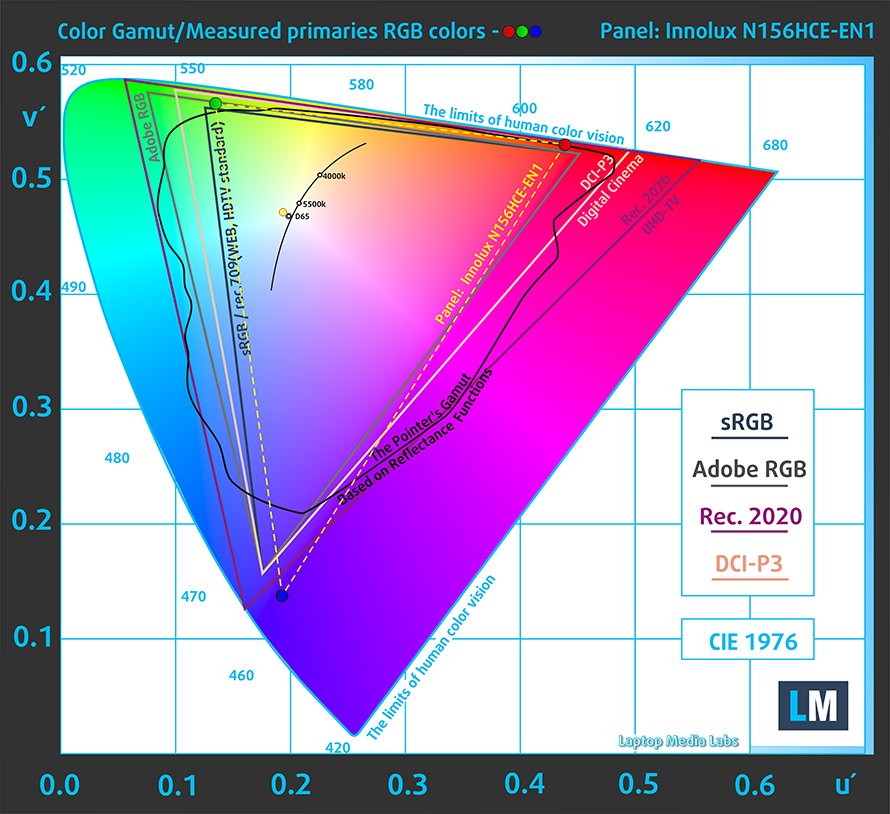
Our “Design and Gaming” profile delivers optimal color temperature (6500K) at 140 cd/m2 luminance and sRGB gamma mode.
We tested the accuracy of the display with 24 commonly used colors like light and dark human skin, blue sky, green grass, orange etc. You can check out the results at factory condition and also, with the “Design and Gaming” profile.
Below you can compare the scores of Lenovo ThinkPad P52 with the default settings (left), and with the “Gaming and Web design” profile (right).
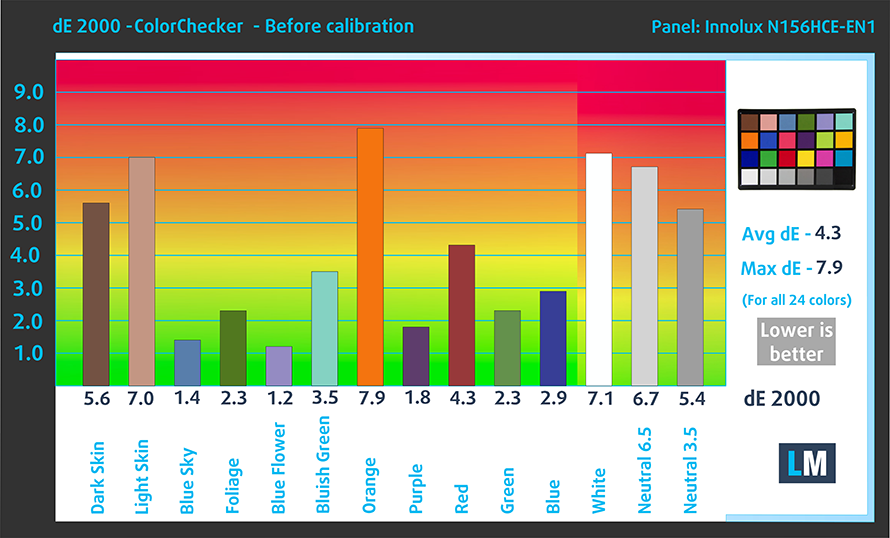
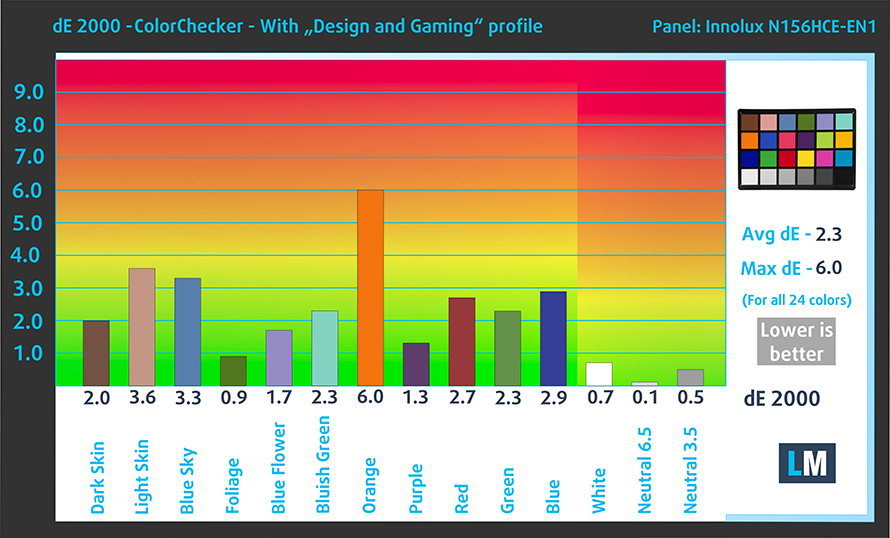
The next figure shows how well the display is able to reproduce really dark parts of an image, which is essential when watching movies or playing games in low ambient light.
The left side of the image represents the display with stock settings, while the right one is with the “Gaming and Web Design” profile activated. On the horizontal axis, you will find the grayscale and on the vertical axis – the luminance of the display. On the two graphs below you can easily check for yourself how your display handles the darkest nuances but keep in mind that this also depends on the settings of your current display, the calibration, the viewing angle, and the surrounding light conditions.

Response time (Gaming capabilities)
We test the reaction time of the pixels with the usual “black-to-white” and “white-to-black” method from 10% to 90% and vice versa.
We recorded Fall Time + Rise Time = 29 ms.
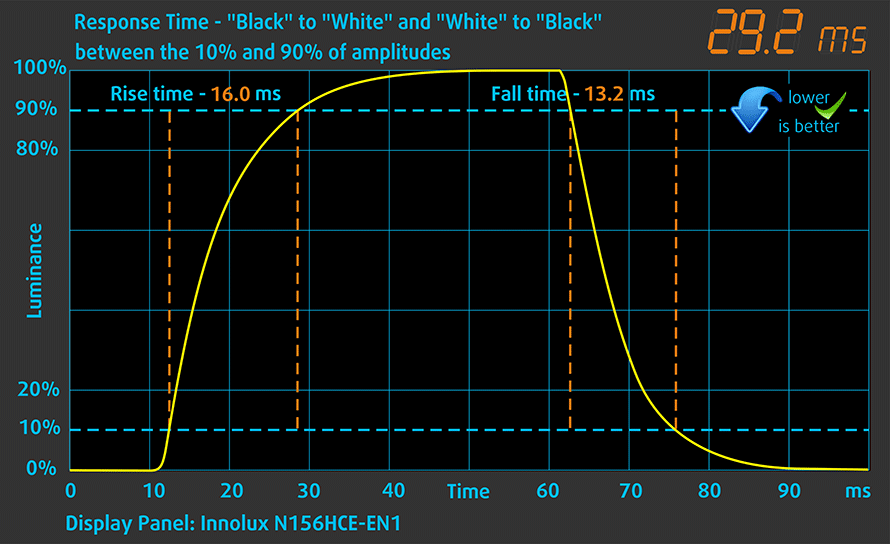
Health impact – PWM / Blue Light
PWM (Screen flickering)
Pulse-width modulation (PWM) is an easy way to control monitor brightness. When you lower the brightness, the light intensity of the backlight is not lowered, but instead turned off and on by the electronics with a frequency indistinguishable to the human eye. In these light impulses, the light/no-light time ratio varies, while brightness remains unchanged, which is harmful to your eyes. You can read more about that in our dedicated article on PWM.
Lenovo ThinkPad P52’s panel uses high-frequency PWM below 80 nits. This makes the display suitable for longer working periods in this aspect.
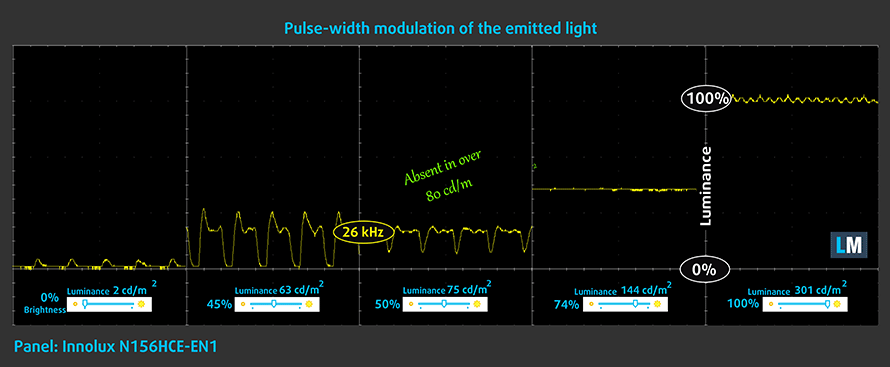
Blue light emissions
Installing our Health-Guard profile not only eliminates PWM but also reduces the harmful Blue Light emissions while keeping the colors of the screen perceptually accurate. If you’re not familiar with the Blue light, the TL;DR version is – emissions that negatively affect your eyes, skin and your whole body. You can find more information about that in our dedicated article on Blue Light.
You can see the levels of emitted blue light on the spectral power distribution (SPD) graph.
Conclusions
Lenovo has put a good all-rounder of a panel on their new ThinkPad P52. It has basically everything you need – high contrast ratio, good viewing angles, Full HD resolution and light that doesn’t flicker above 80 nits. The present PWM is not harmful since it is of a very high frequency but you can still eliminate it and also improve the color accuracy by installing our profiles.
Buy our profiles
Since our profiles are tailored for each individual display model, this article and its respective profile package are meant for Lenovo ThinkPad P52 configurations with 15.6″ Innolux N156HCE-N1, (FHD, 1920 × 1080) IPS.
*Should you have problems with downloading the purchased file, try using a different browser to open the link you’ll receive via e-mail. If the download target is a .php file instead of an archive, change the file extension to .zip or contact us at [email protected].
Read more about the profiles HERE.
除了获得高效和健康友好的配置文件,购买LaptopMedia的产品,您还可以支持我们实验室的发展,我们在实验室测试设备,以产生最客观的评论。

办公室工作
Office Work应该主要由那些花大部分时间看文本、表格或仅仅是浏览的用户使用。该配置文件旨在通过保持平坦的伽玛曲线(2.20)、本机色温和精确的色彩来提供更好的清晰度。

设计与游戏
本资料针对专业处理色彩的设计师,以及游戏和电影。设计与游戏》将显示面板发挥到了极致,使其在白点D65的网页和高清电视的sRGB IEC61966-2-1标准中尽可能准确。

以33%的折扣获得所有3份资料
Sound
Lenovo ThinkPad P52 produces a relatively well-balanced sound that is clear throughout the whole frequency range. However, as we said earlier, the volume is a little quieter than what we’d prefer.

Drivers
You can find all of the drivers and software features for Lenovo ThinkPad P52 on Lenovo’s official web page: https://pcsupport.lenovo.com/uu/en/products/laptops-and-netbooks/thinkpad-p-series-laptops/thinkpad-p52-type-20m9-20ma/downloads
Battery
Now, we conduct the battery tests with Windows Better performance setting turned on, screen brightness adjusted to 120 nits and all other programs turned off except for the one we are testing the notebook with.
To begin with, this workstation is equipped with a pretty hefty battery – 90Wh. In addition to this, it happens that Lenovo did a great job optimizing the device because we got some impressive results here. During web browsing, it was able to achieve around 11 hours and 40 minutes. When we go down the table we get 8 hours of video playback – still impressive. If you opt for some gaming on your ThinkPad P52, be prepared for a huge hit on battery life – merely an hour and 24 minutes of usage, but this is to be expected.
为了模拟真实情况,我们使用自己的脚本自动浏览了70多个网站。
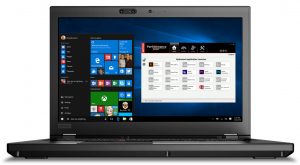
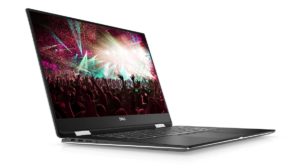
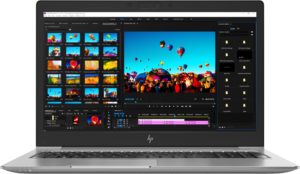

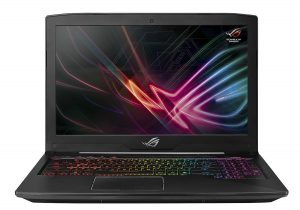
对于这样的每一次测试,我们都使用相同的高清视频。





我们循环使用F1 2017的内置基准,以模拟现实生活中的游戏。





Storage Performance
We received Lenovo ThinkPad P52 with a behemoth of an SSD – the Samsung PM981 512GB M.2 NVMe drive. The results we got, confirmed the strong performance of the 256GB version of this SSD that we tested with the Xiaomi Notebook Air 13.
| SSD model (480-512GB variants) | Max.Seq.Read (GB/s) | Max.Seq.Write (GB/s) | IOPS 4K Read | IOPS 4K Write | Latency Read (ms) | Latency Write (ms) |
| Samsung PM981 | 3.41 | 1.88 | 12199 | 27961 | 0.040 | 0.035 |
| LITE-ON CA3-8D512-Q11 | 3.18 | 1.66 | 9864 | 25136 | 0.171 | 0.041 |
| Intel Pro 6000p Series | 1.83 | 0.59 | 7792 | 28266 | 0.075 | 0.033 |
| Toshiba XG5 KXG50ZNV512G | 3.13 | 0.46 | 8425 | 29661 | 0.055 | 0.046 |
CrystalDiskMark – Max.Seq.Read/Write; AS SSD – IOPS 4K Read/Write, Latency Read/Write
CPU options
Lenovo ThinkPad P52 comes with two processor options. One of them is super fast, the other one – ridiculously fast. Our configuration came with the first one – Intel Core i7-8850H, while the other is a Xeon E-2176M which is clocked slightly higher and has 3MB more cash – 12MB.
Lenovo ThinkPad P52 CPU的变体
在这里,你可以看到市场上[系列]机型的CPU之间的大致比较。这样你就可以自己决定哪一个[系列]型号是最划算的。
注:图表显示的是最便宜的不同CPU配置,所以你应该通过点击笔记本的名称/CPU来检查这些笔记本的其他规格是什么。
结果来自Cinebench 20 CPU测试(分数越高越好)。
结果来自于我们的Photoshop基准测试(分数越低越好)
结果来自Fritz国际象棋基准(分数越高越好)。
GPU options
The official web page states an NVIDIA Quadro P3200 as a top of the line GPU for this device. However, ours came with a Quadro P2000.
结果来自3DMark:Fire Strike(图形)基准测试(分数越高越好)。
结果来自Unigine叠加基准(分数越高越好)。
Gaming tests
The NVIDIA Quadro P2000 places somewhere between GTX 1050 and GTX 1050 Ti, which puts it in the mid-range gaming device category. However, the Quadro series are not specifically designed for gaming and should provide a better score in a video and 3D modeling tasks. Although there are a lot of controversies about the actual advantage of the Quadro cards in these tasks, we will leave this topic for another article.

| Far Cry 5 | Full HD, Normal (Check settings) | Full HD, High (Check settings) | Full HD, Ultra (Check settings) |
|---|---|---|---|
| Average FPS | 46 fps | 42 fps | 39 fps |

| Rise of the Tomb Raider (2016) | Full HD, Lowest (Check settings) | Full HD, Medium (Check settings) | Full HD, Very High (Check settings) |
|---|---|---|---|
| Average FPS | 86 fps | 57 fps | 28 fps |

| TC Rainbow Six Siege | Full HD, Medium (Check settings) | Full HD, High (Check settings) | Full HD, Very High (Check settings) |
|---|---|---|---|
| Average FPS | 102 fps | 85 fps | 78 fps |

| Tom Clancy’s Ghost Recon Wildlands | Full HD, Medium (Check settings) | Full HD, High (Check settings) | Full HD, Very High (Check settings) |
|---|---|---|---|
| Average FPS | 42 fps | 38 fps | 34 fps |
Temperatures and comfort
Max CPU load
In this test we use 100% on the CPU cores, monitoring their frequencies and chip temperature. The first column shows a computer’s reaction to a short load (2-10 seconds), the second column simulates a serious task (between 15 and 30 seconds), and the third column is a good indicator of how good the laptop is for long loads such as video rendering.
Average core temperature (base frequency + X); CPU temp.
| Intel Core i7-8850H (45W TDP) | 0:02 – 0:10 sec | 0:15 – 0:30 sec | 10:00 – 15:00 min |
|---|---|---|---|
| Lenovo ThinkPad P52 | 3.16 GHz (B+22%)@ 83°C | 3.06 GHz (B+18%)@ 87°C | 2.90 GHz (B+12%)@ 87°C |
Lenovo ThinkPad P52 is officially the first device we have tested with this processor. Hence, we have to compare it with the Core i7-8750H. Basically, the difference between them is in the vPro security management capability and the clock speeds. Otherwise, the chips are identical. As you can see from the table above, the values don’t go a lot higher than the base clock speed. This is due to the high base frequency of 2.60 GHz.
Temperature-wise, the ThinkPad P52 managed a relatively high 87°C throughout most of the test. However, it did that with barely producing any sound from the fans, which is really impressive. It definitely beats the aggressive gaming devices with quietness and comfort. Actually, this defines it more as being a workstation.
Real gameplay
| NVIDIA Quadro P2000 | GPU frequency/ Core temp (after 2 min) | GPU frequency/ Core temp (after 30 min) |
|---|---|---|
| Lenovo ThinkPad P52 | 1607 MHz @ 72°C | 1607 MHz @ 77°C |
During a 30-minute gaming session, we didn’t notice any fluctuations in the GPU clock speed. The maximum temperature it reached was 77°C. As it happened in the CPU test, the cooling remained pretty quiet throughout the whole period of gaming.
On the outside, the device remains relatively cool, especially around the palm rest area. The hottest places are where the heatsinks beneath the surface sit. However, the thick materials used for the build of the device result in the temperature maintaining around 50.5°C around the Numpad area and 49°C around the “F3′ key. In addition to that, the keyboard is comfortable to type on after the stress test, which is nice.


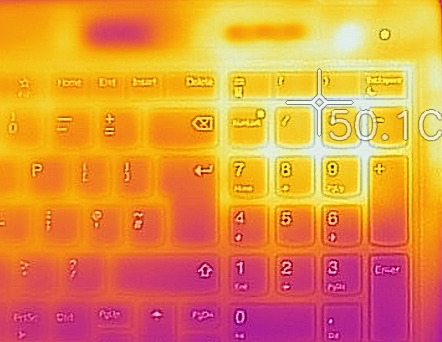
Verdict
 Probably from all of the market categories, workstations are the least popular. Nonetheless, they are among the most powerful of the bunch and also come at very good efficiency levels – high performance plus adequate noise and temperature values. Clearly, Lenovo has done a great job with the ThinkPad P52. It has a very rigid build quality, blazingly fast performance, and incredibly low noise levels coming from the fans. If it wasn’t for some minor flaws it would have been one of the best we’ve ever tested.
Probably from all of the market categories, workstations are the least popular. Nonetheless, they are among the most powerful of the bunch and also come at very good efficiency levels – high performance plus adequate noise and temperature values. Clearly, Lenovo has done a great job with the ThinkPad P52. It has a very rigid build quality, blazingly fast performance, and incredibly low noise levels coming from the fans. If it wasn’t for some minor flaws it would have been one of the best we’ve ever tested.
We start straight with the negative part because many people (including us as well) can close their eyes about some of the issues. First – the sound. The speakers of this device are simply terrible – you can just mute them. Next comes the design. While there are many fans of the ThinkPad design and this part is subjective, we think that Lenovo could have modernized it a little bit. Just like they did to their Legion series. A simple cut of the bezels can mean a lot. Also, when you consider the competition in the face of Dell’s XPS series, ASUS Zbooks, and even Apple’s MacBooks, the ThinkPad P52 looks like their grandfather.
Enough on that. All-in-all, Lenovo has made a very good all-rounder. As we said, the temperatures of this device are very well managed, exactly thanks to the larger body. In the same time, it has a beast of a processor with bumped security features. The Quadro P2000 is average in gaming, but it should provide more performance in heavier tasks like 3D modeling and AI computing. To improve these two activities, Lenovo has put one of the fastest NVMe SSDs on the market – the Samsung PM981. This, however, is region dependent, so don’t be disappointed if you don’t receive your unit with this drive installed.
In addition to the beastly hardware, there is a huge battery. Its 90Wh capacity provides almost 12 hours of web browsing time and 8 hours of video playback. It is comparable to the XPS 15 9575 2-in-1 and HP’s ZBook 15u G5, while it has a more power hungry package. In addition to that, we are satisfied with the input devices. Also, the screen in our configuration was fine but if you really rely on the quality of your display, there is a 4K option as well.
So, would we recommend the Lenovo ThinkPad P52? Well, if you are into pure performance – yes. It is one of the best laptops in the workstation segment you could get. However, if you lean towards a more modernistic feel and representative looks, you should turn your attention to the competition.
Pros
- Built like a tank
- Superb CPU performance
- Great battery life
- No aggressive PWM for brightness adjustment
- A vast selection of ports
- Good and relatively silent cooling solution
- Blazingly fast NVMe SSD (region dependent)
Cons
- Poor sound quality
- Ancient design
You can check the prices and configurations in our Specs System: https://laptopmedia.com/series/lenovo-thinkpad-p52/

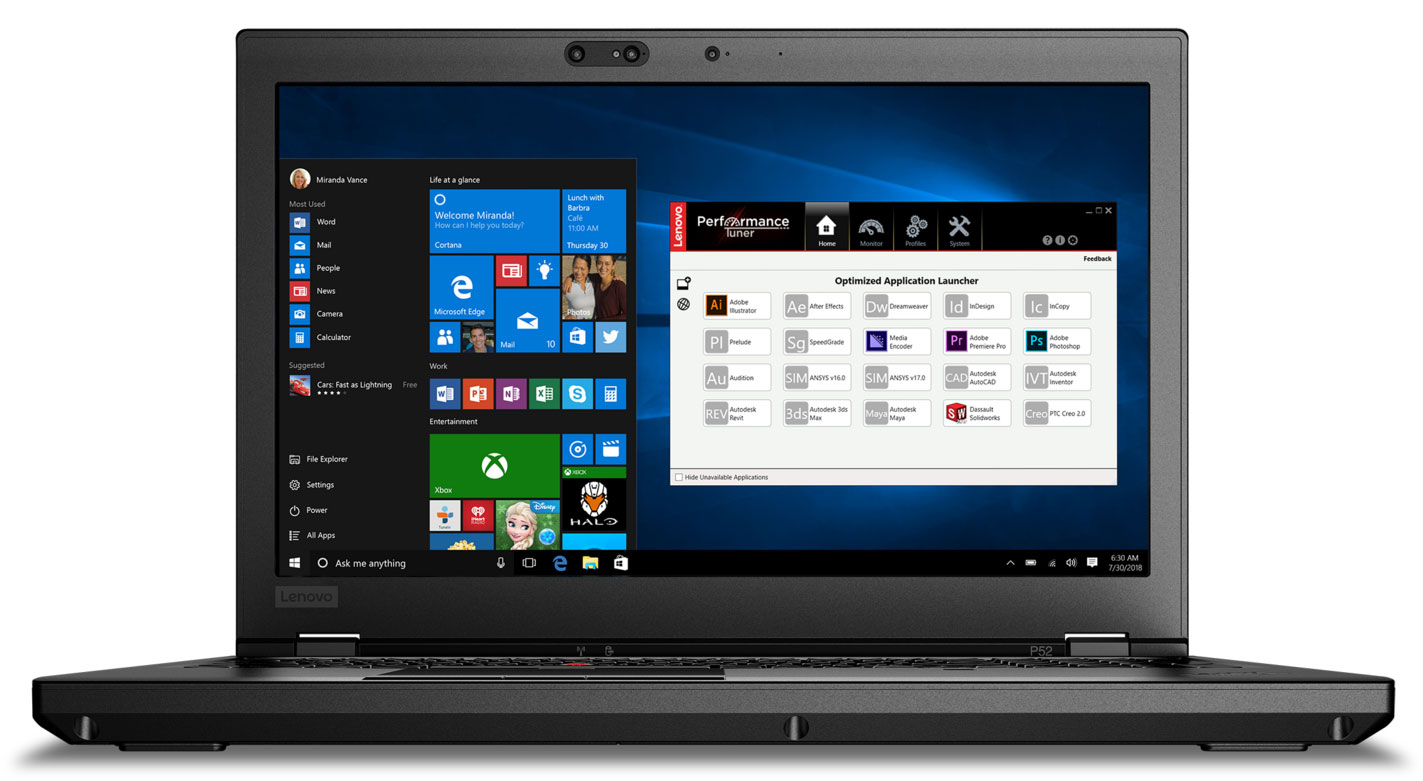
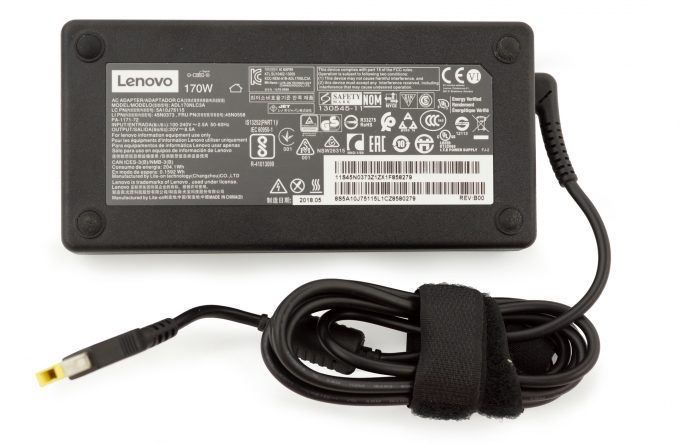



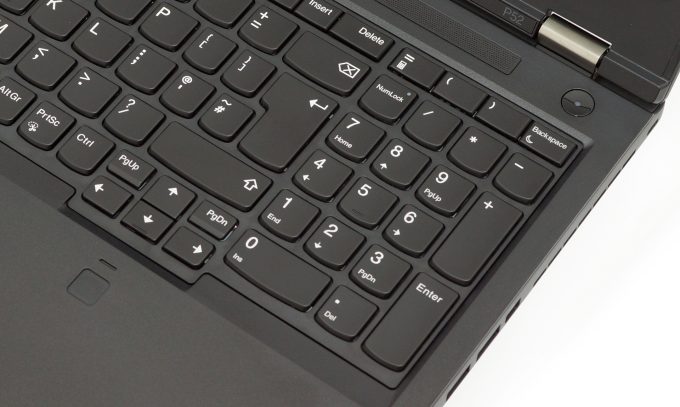
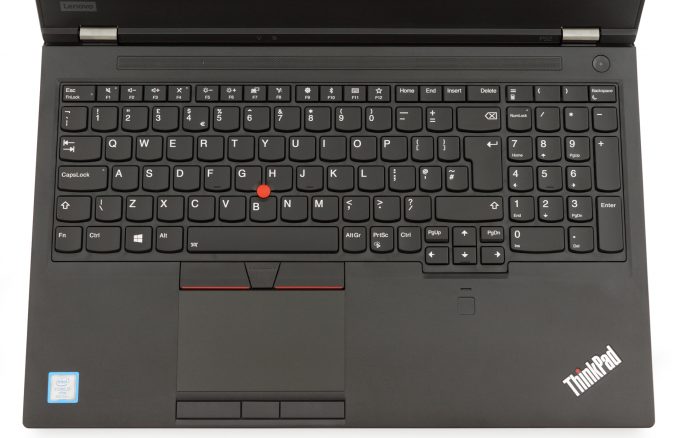

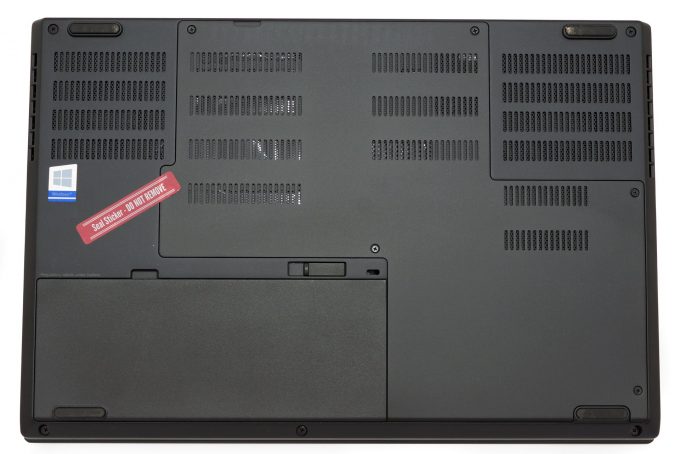



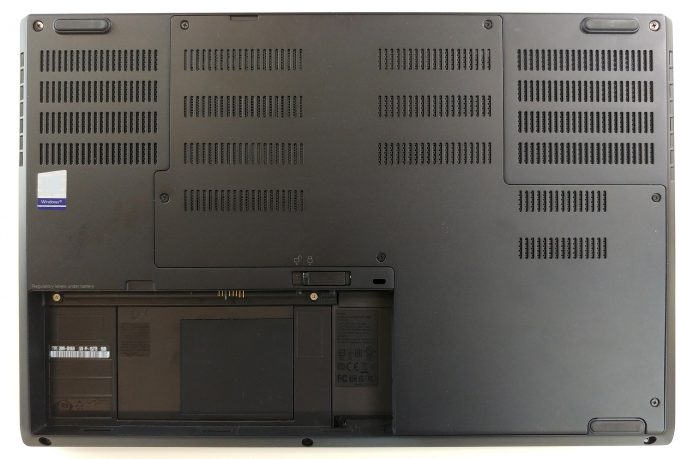
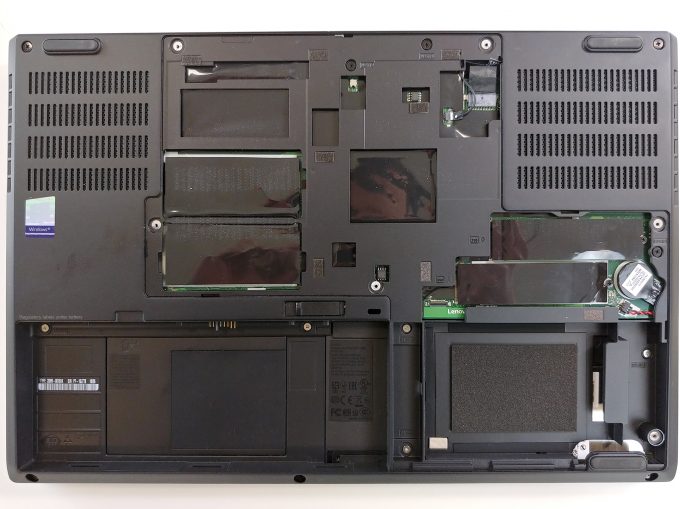








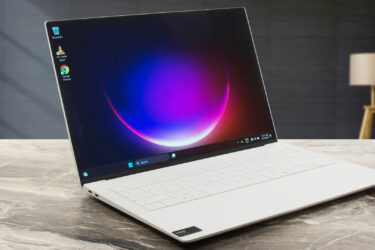
Thanks for the thoughtful review. I’m in the market for a mobile CAD workstation and I am probably going to buy a P52 with the new Quadro P3200 card (B&H has a killer deal going on right now for a 32GB version BTW). I’m a 53 year old dude who’s been playing video games since pong first showed up in 1972. I’m also a professional draftsman who uses AutoCad, Inventor, Solidworks, Fusion 360, and some Rhino on a daily basis. Regarding your previous statement, “Although there are a lot of controversies about the actual advantage of the Quadro cards in… Read more »
Hi, do you guys have also color calibration profiles for only monitors?
And if i but this one for the p52 how does it get installed and changed if i wanna tweak something?
thx
I’ve seen many videos on how to clean the P52 and it’s always complicated. Very tight housing and quite difficult to clean, you need to do a lot of work to clean it well of dust. This is a major drawback for me.